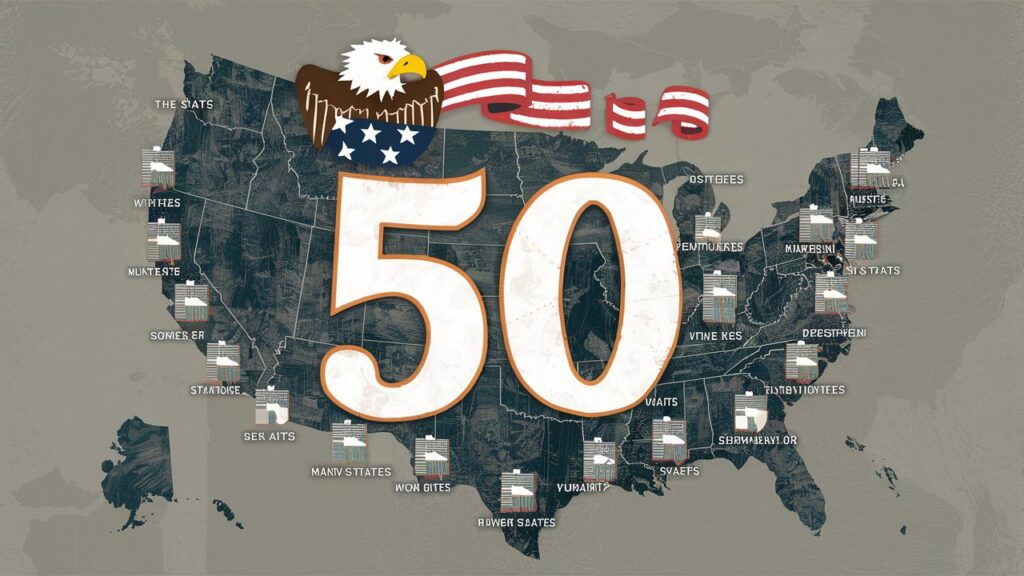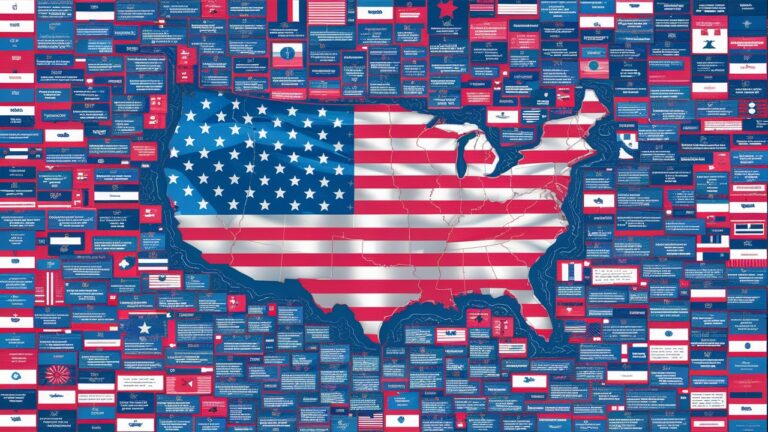The question “How many states are in the USA?” seems straightforward, but it often sparks curiosity about the nation’s history, geography, and political structure. In this article, we’ll explore the answer in depth, clarify common misconceptions, and address related topics such as territories, historical milestones, and why the number matters.
The Simple Answer: 50 States
The United States of America is composed of 50 states, each with its own government, laws, and cultural identity. These states are unified under the federal government, as outlined in the U.S. Constitution. The most recent additions to the Union were Alaska and Hawaii, which became the 49th and 50th states in 1959. Every state is represented by a star on the American flag, symbolizing their equal status within the nation.
While the count of 50 is definitive, discussions about statehood occasionally arise, particularly regarding U.S. territories like Puerto Rico or Washington, D.C. However, these regions are not classified as states—a distinction we’ll explore further below.
Historical Context: The Evolution of U.S. Statehood
The journey to 50 states began with the original 13 colonies that declared independence from Great Britain in 1776. Over the next two centuries, the U.S. expanded westward through purchases, treaties, and territorial acquisitions. Key milestones include:
- The Louisiana Purchase (1803): Doubled the size of the young nation, adding land that would later form 15 states.
- The Mexican-American War (1846–1848): Resulted in the annexation of territories that became California, Nevada, Utah, and parts of other southwestern states.
- The Alaska Purchase (1867): Often called “Seward’s Folly,” this acquisition from Russia paved the way for Alaska’s statehood nearly a century later.
The process of admitting new states requires congressional approval, ensuring each territory meets population, governance, and legal criteria. This deliberate approach reflects the balance of power between state and federal authority.
Territories vs. States: Understanding the Difference
The U.S. governs 14 territories in addition to its 50 states. These regions fall into two categories:
- Incorporated Territories: Part of the U.S. but lacking full statehood (e.g., Palmyra Atoll).
- Unincorporated Territories: Governed by the U.S. but not considered integral parts of the country (e.g., Puerto Rico, Guam, and the U.S. Virgin Islands).
Unlike states, territories cannot vote in presidential elections and have limited representation in Congress. For example, Puerto Rico, home to over 3 million U.S. citizens, has a non-voting congressional delegate. Debates about granting statehood to territories persist, but no changes have been ratified since 1959.
Common Misconceptions About U.S. States
1. Washington, D.C., Is a State
Washington, D.C., serves as the nation’s capital and operates as a federal district. While its residents pay taxes and serve in the military, they lack voting representation in Congress. Recent efforts to make D.C. the 51st state have gained traction but face political hurdles.
2. The U.S. Has 52 States
The myth of 52 states likely stems from confusion with territories or the inclusion of Puerto Rico and Washington, D.C., in casual counts. However, the official tally remains 50.

3. All U.S. Territories Will Become States
While Puerto Rico has held non-binding referendums on statehood, achieving it requires complex legislative steps. Most territories have not pursued statehood due to cultural, economic, or political reasons.
Why the Number of States Matters
The count of 50 states reflects America’s growth and diversity. Each state contributes unique resources, industries, and cultural traditions to the national identity. Politically, the number ensures proportional representation in the Electoral College and Congress, balancing the interests of densely populated states like California with smaller ones like Wyoming.
Moreover, the fixed number of stars on the flag (one per state) serves as a symbol of unity. Any change to this number would require redesigning the flag—a process that last occurred in 1960 after Hawaii’s admission.
Frequently Asked Questions (FAQs)
1. Could the U.S. Add More States in the Future?
Yes, but it requires congressional approval. Puerto Rico and Washington, D.C., are the most frequently discussed candidates, though their path to statehood remains uncertain.
2. Why Aren’t Territories Considered States?
Statehood requires a territory to draft a constitution, gain congressional endorsement, and demonstrate broad public support. Many territories prioritize preserving their distinct identities over integration.
3. Do Territories Follow U.S. Laws?
Territories are subject to federal laws but can create local legislation. For instance, American Samoa follows a traditional tribal governance system alongside U.S. oversight.
4. How Do States Benefit from Being Part of the USA?
States receive federal funding, military protection, and infrastructure support. They also gain a voice in national decisions through congressional representation.
Conclusion
The United States comprises 50 states, a number solidified by centuries of expansion and compromise. While territories and Washington, D.C., contribute to the nation’s diversity, they remain distinct from states in legal and political terms. Understanding this distinction—and the history behind it—helps clarify America’s unique structure and the ongoing debates about representation and identity. Whether the count remains at 50 or grows in the future, each state’s role in shaping the nation’s story remains undeniable.
This article aimed to answer “How many states are in the USA?” while providing context about the nation’s growth, territories, and common myths. For more insights, explore resources on U.S. history or current legislative debates about statehood!
